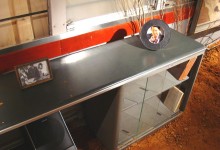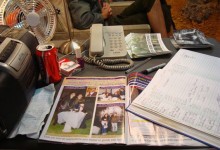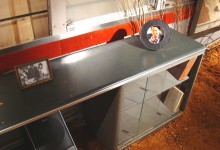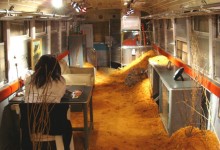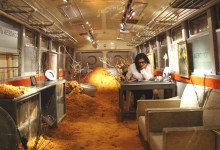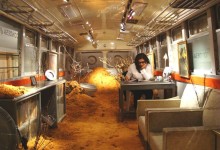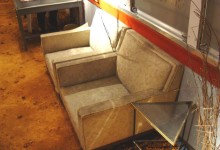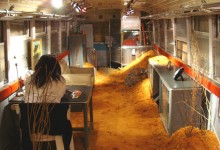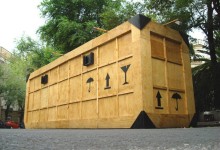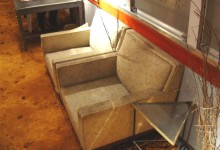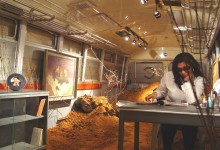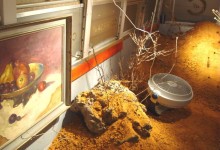Text by Leonardo Ramirez
On April 24th, 2008 the artwork titled Latin American Export by Renato Garza Cervera (Mexico City, 1976) and Agnieszka Kotecka (Poland, 1980) was presented in an old Japanese trolleybus – which was converted in 2005 into a project room and temporary exhibition venue by Ariadna Ramonetti.
This certainly impressive piece, generated a series of questions and readings which in my opinion have been enriched by the healthy distance afforded by time.
A wooden crate of industrial dimensions was literally thrown into the street, waiting to be sent to an uncertain place in the world. The piece gave the impression of being ready at any time to be carried by a huge crane to transport it to a ship or a cargo plane.
The first impression on seeing the artwork worked perfectly, my mind began to spin like a finder of lost objects. That anomaly did not correspond to the usual landscape of the place. A huge container managed to perform the old trick of the disappearance of the elephant, but in this case our elephant had not disappeared; his bowels deftly turned into a unique vivarium full of earth to the ankles. Inside inevitable relations with reality, with our own, the most immediate, the most common; they manifested: a frozen world, dressed in retro furniture and gossip magazines, inhabited by banana republic dictators and lobotomized secretaries, ambiance by sounds of crickets and coyotes, finally impregnated with an old and rotten whiff.
The piece by Renato Garza and Agnieszka Kotecka works from the nullification of the base object, calibrating the content from the implementation of two devices. One, which
dissociates the trolley from its context and the piece; and another, which produces forms of interaction with the work from the first perception of the object, up to the experiential approach in the interior setting which replaced the goods which could have been transported. These mechanisms make the experience a very short action by which we were inevitably led. The continent openly displays the cheesy and devastating contents we wish not to be part of: “One moment, you can take a seat, I’ll help you rightaway”.
The piece managed to condense with extremely effective strategies a cascade of associations, concepts, ideas and clichés of a very open concept of the Latin American, at the same time generated an absurd image capable of giving us some comfort: A temporary container which encapsulates a reality which in the nature of commercial product is sent away for someone else to use it; but it becomes more evident every time we dodge it.
Let’s hope this package is really temporary … for the good of all.


